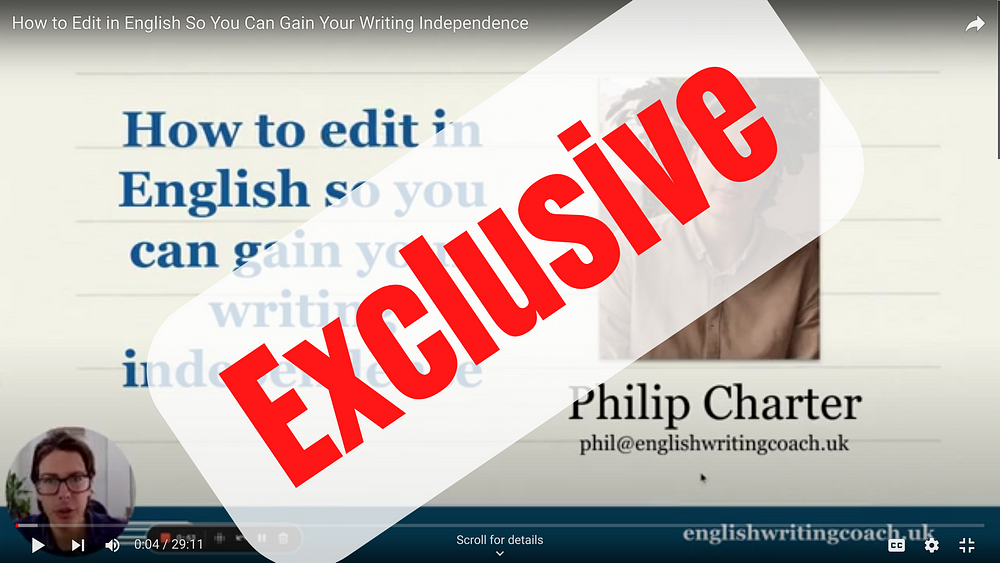
The most pressing issue that most of my clients want to fix is being able to check (and trust) their writing in English.
Do you ever experience doubts like these?
- How can I know my work is 100% accurate?
- Who will check if my writing sounds natural?
- How much will it cost to hire an editor?
If this seems familiar, the following article could save you countless rewrites, and thousands of dollars in editing fees.
People want to invest time in themselves. That’s why your colleagues or writing buddies won’t spend hours helping you improve. They will just see your writing as extra work to correct.
For writers with English as a second language, editing can seem like a daunting challenge. The key is to break the task down.
This comprehensive editing list will give you the tools to get started.
And there’s a video which goes into even greater detail.
(read to the end for the video).
Editing Checklist for Multilingual Writers

- The task
- Does the piece hit the brief / Have you followed the instructions?
- Does your writing conform to the expected parameters of the form?
- Does your writing speak to its intended audience in an appropriate and engaging way?
- Is the writing achieving your purpose of entertaining, persuading, inspiring, or informing readers? - Structure and coherence
- Is the content in the most sensible order? Is everything included?
- Does each paragraph make one well-developed point?
- Are all the list items parallel?
- Are there any repeated points or sections you can remove?
- Have you used appropriate in-sentence and between-sentence linking? - English Accuracy
- Have you checked for your typical errors — tense slips, comma splices, word order, etc?
- Spelling. Have you checked for countable/uncountable errors, commonly confused words, and homophones?
- Capitalisation. Are proper nouns (and only proper nouns) capitalised?
- Are abbreviations, acronyms, and initialisms used consistently?
- Are your commas used correctly? Is your punctuation consistent (e.g. with numbers)?
- Can you simplify your punctuation marks (e.g. reducing semicolons)?
- Have you checked for false friends, overly technical terms, and faulty collocations? - Natural Style
- Have you eliminated all repetition in content, sentence construction, or word use?
- Have you used the active voice where possible? (academic and formal business writing excluded)
- Have you removed consecutive sentences of the same length and sentences with too many one-syllable words? (robotic text) - Advanced Techniques
- Have you used appropriate literary and rhetorical devices in the right quantity?
- Have you read the work aloud? This highlights awkward formations and unintentional sound techniques (like alliteration or assonance) which trip the reader up.
That’s it. You’ve finished your edit.
At this point, it’s still a good idea to ask a trusted mentor or colleague to assess your work. If that’s not possible, you’ve still checked your work to the best of your ability.
I’ve recorded a full-length training video with loads more detail and examples. It contains ALL the steps multilingual writers need to take control of their work.
To get the exclusive 30-minute training video, sign up to my mailing list — no spam, just one cool writing tip per week.
Enjoy.

Philip Charter is a writing coach from the UK who works with multilingual content writers. He is also the author of two collections of short fiction and Fifteen Brief Moments in Time, a novella-in-flash.
If you found this useful, please check out my other articles and connect on LinkedIn.
